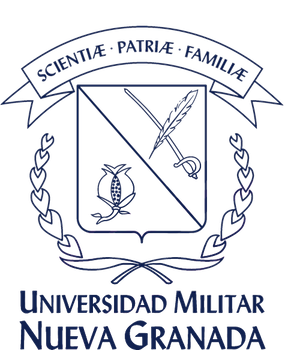An organic load influence upon 3-stage RBC reactors performance to treat a synthetic effluent
Abstract
This paper deals with the organic load rate (OLR) influence upon removal efficiency of aerobic rotating biological contactor (RBC), i.e. 3-stage reactors by treatment of an industrial synthetic effluent in order to establish adjustment of closing effluent in compliance with Venezuelan legislation. Upon experiment and based on standard methods we evaluated pH, total alkalinity, dissolved oxygen, biological oxygen demand (BOD), chemical oxygen demand (COD), total suspended solid (TSS), overall Kjeldahl nitrogen (TKN), NH4 +, NO2 - and NO3 - . A variation of OLR applied was obtained by modifying hydraulic retention time (HRT) (24, 12, and 6 h), staying constant the initial COD (synthetic influent of sucrose+ urea.) The greater efficiency of COD removal was got for an overall OLR of 11.68 gCOD/m2 .d (96.25%, HRT=12 h.) Removal efficiencies of overall N-total in HRT 24 and 12 h were 66.92 and 62.95%, respectively. The major C&N removal was got during the first stage of reactors to comply with Venezuelan COD allowable limit (<350 mg/L). A likely occurrence of nitrification process triggered increased inorganic nitrogen concentrations by final effluent.
Downloads
Languages:
esReferences
Alemzadeh I.; and Vossoughi F.; (2001). Biodegradation of toluene by an attached biofilm in a rotating biological contactor. En: Process Biochemistry, Vol. 36, pp. 707-711. http://dx.doi.org/10.1016/s0032-9592(00)00232-6
Alemzadeh I.; Vossoughi F.; Houshmandi M.; (2002). Phenol biodegradation by rotating biological contactor. En: Biochemical Engineering Journal, Vol. 11, pp. 19-23. http://dx.doi.org/10.1016/s1369-703x(02)00011-6
AMERICAN PUBLIC HEALTH ASSOCIATION (APHA), AMERICAN WATER WORKS ASSOCIATION (AWWA), WATER ENVIRONMENT FEDERATION (WEF), (1998). Standard methods for examination of water and wastewater (20 ed.). Washington: American Public Health Association 1015 Fifteenth Street, N.W.
Banerjee Goutam, (1996). Phenol and thiocyanate-based wastewater treatment in RBC reactor. En: Journal of Environmental Engineering, Vol. 122, pp. 941-948. http://dx.doi.org/10.1061/(ASCE)0733-9372(1996)122:10(941)
Castillo E., Vergara M., and Moreno Y., (2007). Landfill leachate treatment using a rotating biological contactor and an upward-flow anaerobic sludge bed reactor. En: Waste Management, Vol. 27, pp. 720-726. http://dx.doi.org/10.1016/j.wasman.2006.08.003
Chen Zhiqiang, Wen Qinxue, Wang Jianlong, LI Fang, (2006). Simultaneous removal of carbon and nitrogen from municipal-type synthetic wastewater using net-like rotating biological contactor (NRBC). En: Process Biochemistry, Vol. 41, pp. 2468-2472. http://dx.doi.org/10.1016/j.procbio.2006.06.003
Cortez S., Teixeira P., Oliveira R., and Mota M., (2008). Rotating biological contactors: a review on main factors affecting performance. En: Reviews Environmental in Science and Biotechnology, Vol. 7, pp. 155-172. http://dx.doi.org/10.1007/s11157-008-9127-x
DECRETO 883, (1995). Normas para la clasificación y el control de la calidad de los cuerpos de aguas y vertidos de efluentes líquidos. Gaceta Oficial de la República de Venezuela 5021 extraordinaria, sección III, pp.89-90. Caracas: 18 de diciembre.
Di Palma L., and Verdone N., (2009). The effect of disk rotational speed on oxygen transfer in rotating biological contactors. En: Bioresource Technology, Vol. 100, pp. 1467-1470. http://dx.doi.org/10.1016/j.biortech.2008.07.058
Dutta S., Hoffmann E., and Hahn H., (2007). Study of rotating biological contactor performance in wastewater treatment using multi-culture biofilm model. En: Water Science and Technology, Vol. 55, pp. 345-353. http://dx.doi.org/10.2166/wst.2007.276
Eckenfelder William, (2000). Industrial water pollution control. 3 ed., New York: McGraw-Hill, 584 p.
Fang H., and Yeong C., (1993). Biological wastewater treatment in reactors with fibrous packing. En: Journal of Environmental Engineering, Vol. 119, pp. 946-957. http://dx.doi.org/10.1061/(asce)0733-9372(1993)119:5(946)
Griffin P., and Findlay G., (2000). Process and engineering improvements to rotating biological design. En: Water Science and Technology, Vol. 41, pp. 137-144.
Gupta A.; and Gupta S., (1999). Simultaneous carbon and nitrogen removal in a mixed culture aerobic RBC biofilm. En: Water Research, Vol. 33, pp. 555-561. http://dx.doi.org/10.1016/s0043-1354(98)00206-1
Gupta A., and Gupta S., (2001). Simultaneous carbon and nitrogen removal from high strength domestic wastewater in an aerobic RBC biofilm. En: Water Research, Vol. 35, pp. 1714-1722. http://dx.doi.org/10.1016/s0043-1354(00)00442-5
Hanhan O., Orhon D., Krauth K., and Gunder B., (2005). Evaluation of denitrification potential of rotating biological contactors for treatment of municipal wastewater. En: Water Science and Technology, Vol. 51, pp. 131-139.
Herman Susana, (1997). Proceso de salinización en el Lago de Maracaibo. Instituto para el Control y la Conservación del Lago de Maracaibo (ICLAM), 109 p.
Hiras Demetrios, Manariotis Ioannis, and Grigoropoulus Sotirios, (2004). Organic and nitrogen removal in a two-stage rotating biological contactor treating municipal wastewater. En: Bioresource Technology, Vol. 93, pp. 91-108. http://dx.doi.org/10.1016/j.biortech.2003.06.005
Israni Sameer, Koli Shrikant, Patwardhan A., Melo J., and D'souza S., (2002). Phenol degradation in rotating biological contactors. En: Journal of Chemical Technology and Biotechnology, Vol. 77, pp. 1050-1057. http://dx.doi.org/10.1002/jctb.677
Martín-Cereceda Mercedes, Serrano Susana, and Guinea Almudena, (2000). Biofilm communities and and operational monitoring of a rotating biological contactor system. En: Water Science and Technology, Vol. 43, pp. 247-253.
Metcalf Y. Eddy, (2003). Wastewater engineering: treatment, disposal and reuse. 4 ed., New York: McGraw-Hill, 1771 p.
Najafpour Gashem, Naidu Punita, and Kamaruddin Azlina, (2002). Rotating biological contactor for biological treatment of poultry processing plant wastewater using Saccharomyces cerevisiae. En: ASEAN Journal of Chemical Engineering, Vol. 2, pp. 1-6.
Najafpour Ghasem, Yieng Hii, Younesi Habibollah, and Zinatizadeh Aliakbar, (2005). Effect of organic loading on performance of rotating biological contactors using palm oil mill effluents. En: Process Biochemistry, Vol. 40, pp. 2879-2884. http://dx.doi.org/10.1016/j.procbio.2005.01.002
Najafpour Ghasem, Zinatizadeh A., and Lee L., (2006). Performance of a three-stage aerobic RBC reactor in food canning wastewater treatment. En: Biochemical Engineering Journal, Vol. 30, pp. 297-302. http://dx.doi.org/10.1016/j.bej.2006.05.013
Nowak O., (2000). Upgrading of wastewater treatment plants equipped with rotating biological contactors to nitrification and P removal. En: Water Science and Technology, Vol. 41, pp. 145-153.
Osho A., Mabekoje O., and Bello O., (2010). Preliminary evaluation of wastewater effluents from two food companies in Nigeria. En: African Journal of Microbiology Research, Vol. 4, pp. 1395-1399.
Patwardhan A., (2003). Rotating biological contactors: a review. En: Industrial & Engineering Chemistry Research, Vol. 42, pp. 2035-2051. http://dx.doi.org/10.1021/ie0200104
Satinder K., and Gupta S., (2000). Biodegradation of trichloroethylene in a rotating biological contactor. En: Water Research, Vol. 34, pp. 4207-4214. http://dx.doi.org/10.1016/S0043-1354(00)00183-4
Schmidt I., Sliekers O., Schmid M., Bock E., Fuerst J., Kuenen J., Jetten M., and Strous M., (2003). New concepts of microbial treatment processes for the nitrogen removal in wastewater. En: FEMS Microbiology Reviews, Vol. 27, pp. 481-492. http://dx.doi.org/10.1016/s0168-6445(03)00039-1
Shrivastava Pooja, and Soni Anupam, (2012). Treatment of rice mill effluent for pollution control by electrocoagulation. En: Journal of Chemical, Biological and Physical Sciences, Vol. 2, pp. 480-483.
Spengel Douglas, and Dzombak David; (1991). Treatment of landfill leachate with rotating biological contactors: bench-scale experiments. En: Research Journal WPCF, Vol. 63, pp. 971-980.
Tchobanoglous G., and Burton F., (1991). Wastewater engineering: treatment, disposal and reuse. 3 ed., Metcalf & Eddy. New York: McGraw-Hill.
Teixeira Pilar, and Oliveira Rosário; (2001). Denitrification in a closed rotating biological contactor: effect of disk submergence. En: Process Biochemistry, Vol. 37, pp. 345-349. http://dx.doi.org/10.1016/S0032-9592(01)00216-3
Torkian Ayoob, Yazdani O., and Alinejad K., (2003). Treatability evaluation of municipal wastewater and anaerobically-treated industrial effluent in a rotating biological contactor. En: IJE Transactions B: Applications, Vol. 16, pp. 143-154.
Torkian Ayoob, Alinejad K., and Hashemian S., (2003). Posttreatment of upflow anaerobic sludge blanket-treated industrial wastewater by a rotating biological contactor. En: Water Environment Research, Vol. 75, pp. 232-237 http://dx.doi.org/10.2175/106143003X141015












